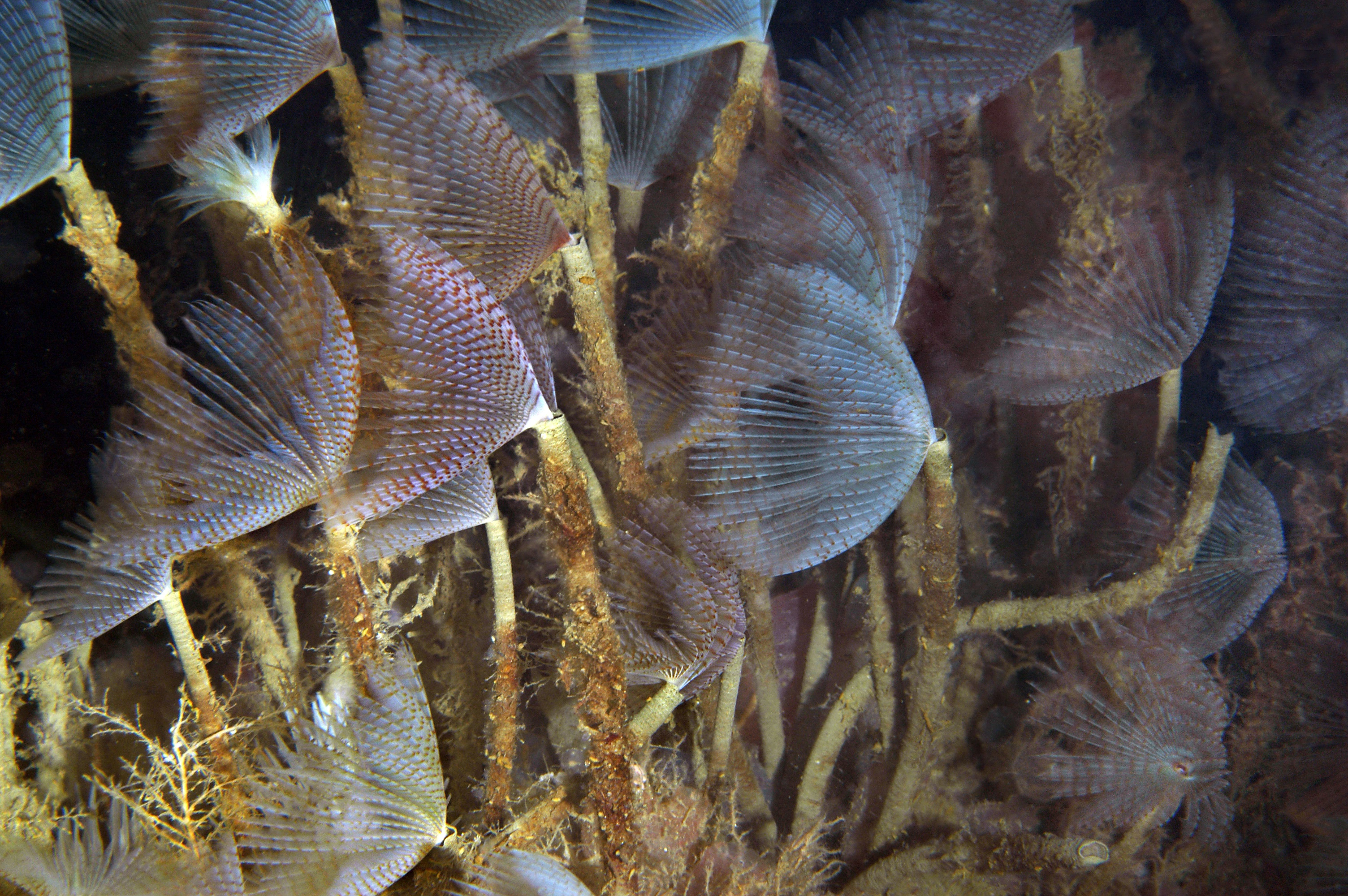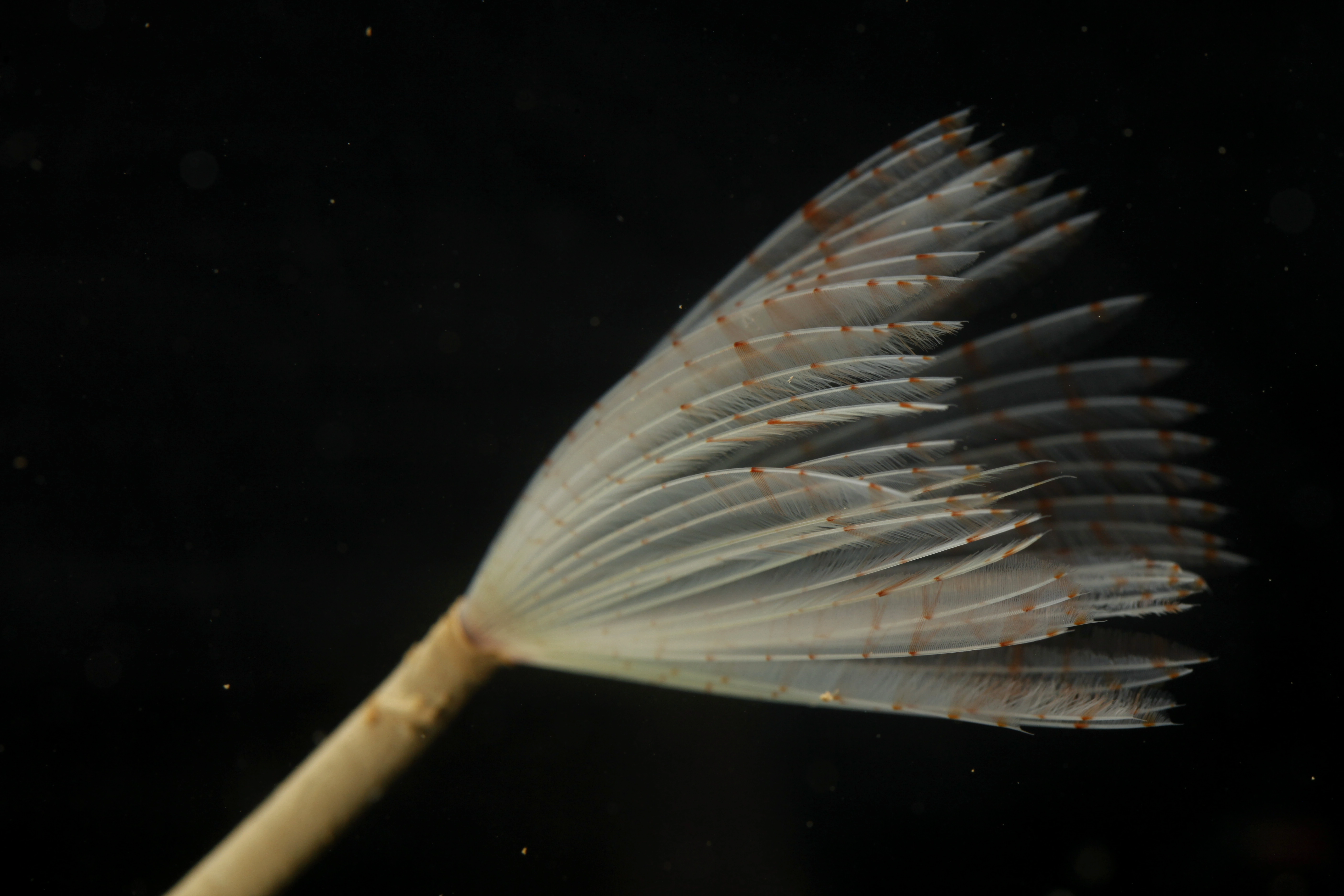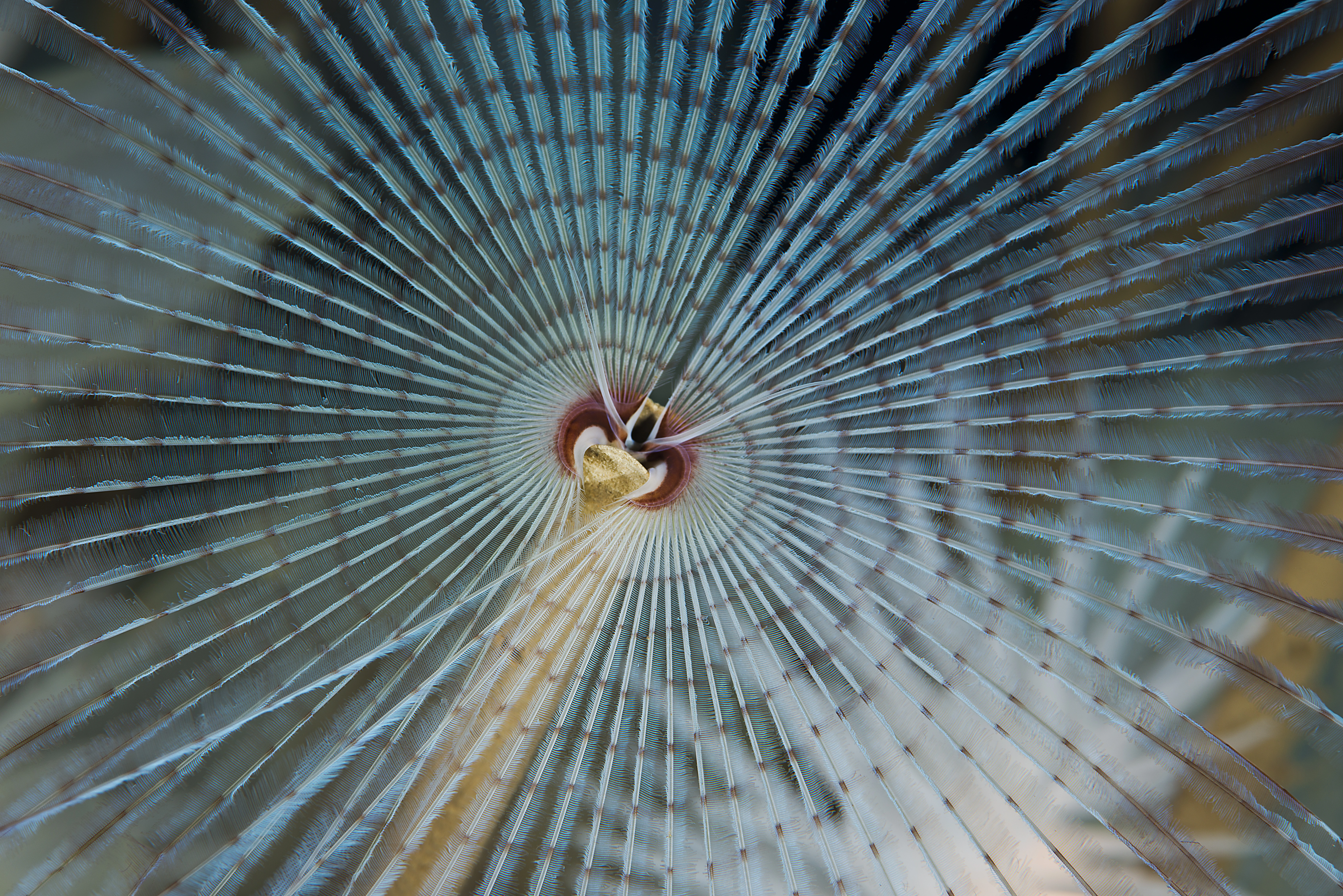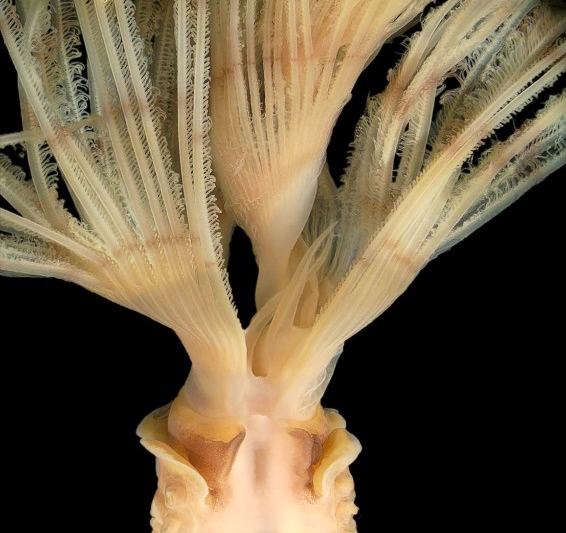Sabella pavonina
Sabella pavonina
This is the largest fanworm in Norway. This tube-dwelling species is found in shallow waters, both on hard and in soft bottoms. In Norwegian ports, it can be found on artificial surfaces, sometimes in high densities.
- Innhold
- Measurements
- Characteristics
- Look-alikes
- Biology, ecology and behaviour
- Habitat
- Recommended citation
Measurements
Up to 30 cm long, without the tube, but generally 5–10 cm. It has eight thoracic and numerous abdominal segments.
Characteristics
This is the largest fanworm in Norway. They have a bright radiolar crown, sometimes with red and orange transverse bands. The tube is made of mud and mucus.
Sabella pavonina
Sabella pavonina. Detail of the radiolar crown with semicircular lobes and sticking dorsal radiolar appendages, structures responsible of sorting the particles according to size.
Look-alikes
Small individuals can be mistaken as Bispira crassicornis and Bispira volutacornis, both with a similar colour pattern. However, S. pavonina does not have eyes in their radioles, while the two Bispira species do. The crown of S. pavonina is circular, not spiral-formed like the Mediterranean Sabella spallanzanii or in some Bispira species. Moreover, Sabella species have chaetae arranged in spirals on the abdomen, while in Bispira species, these are arranged in a C-shape.
Sabella spallanzanii (Mediterranean and southern NEA) showing a spiral radiolar lobe
Sabella spallanzanii (Mediterranean) showing a spiral radiolar lobe.
Biology, ecology and behaviour
Sabella pavonina make their tubes out of mud. The tubes are longer than the worms, and they can hide fast if they notice any danger. They use their beautiful radiolar crown to collect particles from the water column. Some structures in the mouth sort the particles into food or as material for their tubes.
Habitat
The species is found attached to hard substrates but often surrounded by muddy or sandy sediments. It is common in the eastern Atlantic, and mainly found in northwest Europe. Sabella pavonina is commonly found in shallow vertical artificial substrates in Norwegian ports, sometimes in high densities.
Recommended citation
Capa M. Sabella pavonina Savigny, 1820. www.artsdatabanken.no/Pages/311727. Downloaded <year-month-day>.




